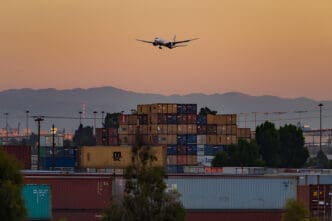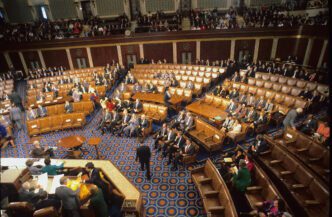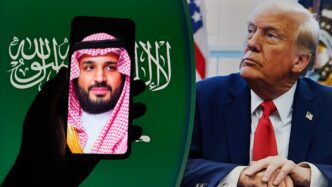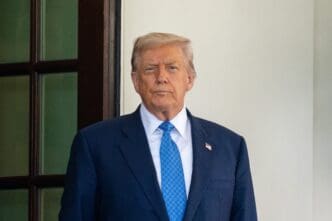Executive Summary
The Story So Far
Why This Matters
Who Thinks What?
Leaders from India, Russia, and China are convening in Tianjin this weekend for the 25th Shanghai Cooperation Organization (SCO) summit, where the policies of President Donald Trump are expected to cast a significant shadow over discussions, despite his absence. Analysts suggest that Trump’s assertive trade actions and shifting diplomatic stances are inadvertently pushing nations towards closer cooperation, particularly between India and China, and solidifying the existing “no limits” partnership between Russia and China.
President Trump’s Enduring Influence
Despite not being physically present, President Donald Trump’s influence is anticipated to be a central topic of conversation. Yun Sun, director of the China Program at the Washington-based Stimson Center, noted that while the U.S. may not be at the table, “the US is always present.” Sushant Singh, a lecturer in South Asian Studies at Yale University, predicted that “the one thing that they’re going to talk about is the United States, its policies, its tariffs.”
India’s Geopolitical Recalibration
Indian Prime Minister Narendra Modi’s attendance comes days after the Trump administration imposed a 50% tariff on Indian goods, one of the highest under President Trump’s current policies. The White House indicated this was partly a penalty for India’s purchase of Russian oil. This move marks a reversal of decades of U.S. efforts to cultivate India as a democratic counterweight to China, which Singh described as “a massive shift” and “a U-turn.”
Analysts suggest these tariffs have compelled Modi to make concessions towards China, cautiously embracing Chinese leader Xi Jinping. This visit marks Modi’s first to China since 2018, with Singh stating, “Mr. Modi had no option but to go and cut a deal with President Xi.”
Relations between India and China had deteriorated significantly in 2020 following violent border clashes in the Himalayas. However, after a prolonged freeze, both countries have recently begun re-issuing tourist visas and plan to resume direct flights, signaling an improvement in their frosty ties. Modi’s presence in Tianjin signifies a strategic recalibration for India, highlighting its new geopolitical vulnerability.
Deepening Russia-China Partnership
Russian President Vladimir Putin will also visit China, following President Trump’s recent meeting with him at a U.S. airbase in Alaska. Putin is set to participate in the Tianjin summit and attend a military parade in Beijing on September 3, alongside Xi and North Korea’s Kim Jong Un, showcasing a unified front among the three powers.
President Trump’s intermittent overtures to Putin are unlikely to impact the “no limits” partnership between Russia and China, which has significantly deepened in recent years. This deepening is evident in record-high cross-border trade and increased security cooperation, including their first-ever joint submarine patrol in the Pacific.
Shared Perception of U.S. as a Threat
Analysts identify a shared perception of the U.S. as a threat as the primary bond between these once-hostile neighbors. Sun of the Stimson Center referenced a Chinese saying: “China and Russia can share miseries but not happiness.”
China faces a slumping domestic economy and an ongoing trade war with the U.S., while Russia, with its smaller economy and international isolation due to its invasion of Ukraine, relies heavily on China, making Moscow the junior partner in their relationship. Beijing’s top diplomat reportedly told European officials that China “can’t accept a Russian defeat in Ukraine.” Claus Soong, an analyst specializing in China-Russia relations, warned that a Russian collapse or “Westernization” would be a “major devastation for the Chinese security architecture.”
In 2022, just before Russia’s invasion of Ukraine, Putin and Xi met to advocate for “shaping a polycentric world order,” reflecting years of their governments chafing against U.S. global dominance since the Soviet Union’s collapse.
China’s Opportunity on the World Stage
President Trump’s often chaotic foreign policy, characterized by attacks on long-time allies and the rapid dismantling of global free trade agreements, presents a fresh opportunity for China. As world leaders gather, Xi is expected to promote China as a stable and dependable alternative to Washington.
Sun stated that “China is definitely using this opportunity to demonstrate to China’s neighbors that China is a benevolent leader, a benevolent hegemon…dependable, predictable.” While the SCO has faced challenges, including recent conflicts between several member states, this Eurasian gathering may offer an appealing alternative to nations wary of the U.S. and its increasingly unpredictable global stance.








